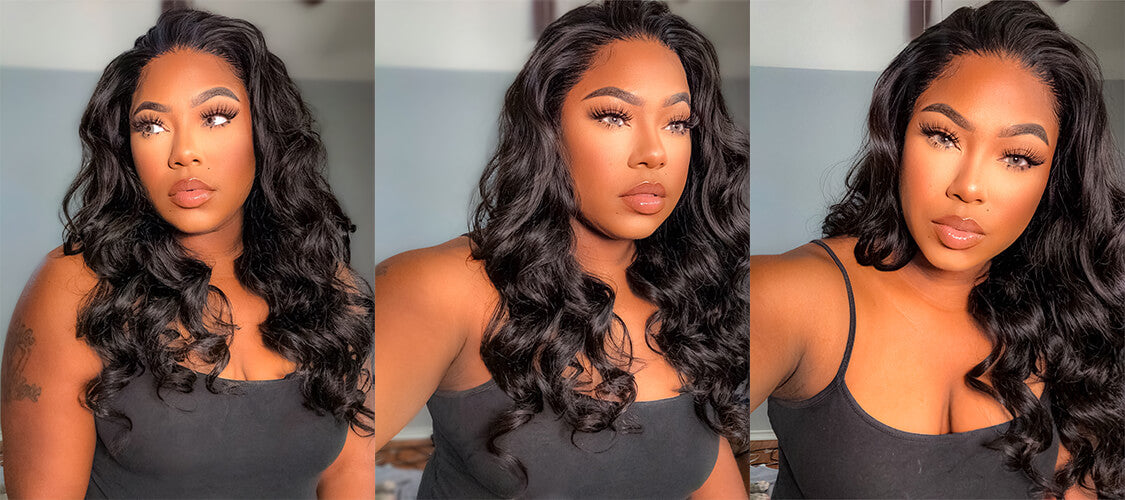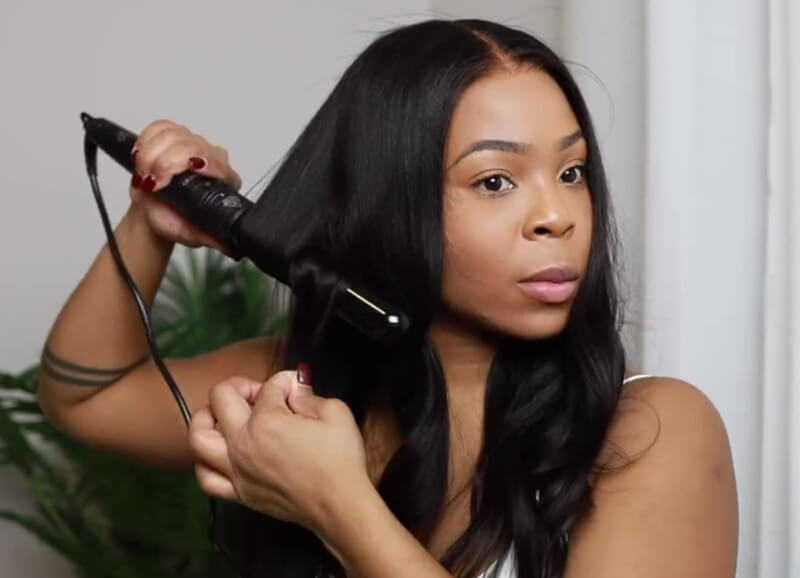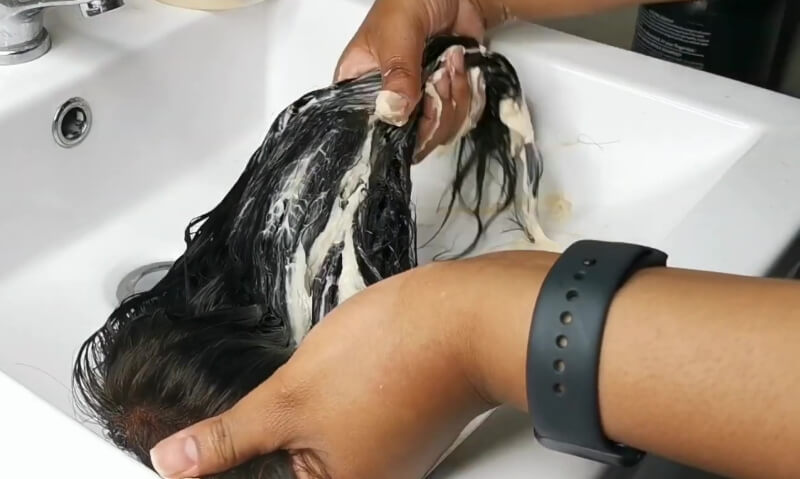How Long Do Lace Front Wigs Last

After investing in a new lace front wig, many wonder exactly how long the unit will last. With so much misinformation on the internet, it’s hard to know what to believe. If you want concrete answers, we can help. In this article, we’ll tell you how long lace front wigs generally last and inform you of several factors that affect their longevity.
How Long Do Lace Front Wigs Last?
Human hair lace front wigs last from 3 to 6 months on average. Remy hair wigs, which are of much better quality, last 4 to 12 months. The highest quality virgin hair lace front wigs can last up to 18 months. The amount of time that your specific lace front wig will last depends heavily on how well you care for it, where the hair came from, and much more.
Factors that Affect Lace Front Wigs Longevity
Now that you know some general guidelines for how long your lace front wig will last, let’s dive into the topic a little deeper. In this section, we’ll introduce you to several factors that affect lace front wig longevity. You may be surprised to find out just how many factors are at play.
Hair Grade

A lace front wig’s materials significantly affect how long the unit will last. Here are the main 3 hair grades you’ll come across as you shop for wigs:
Virgin hair - If your lace front is made of virgin hair, you can expect it to have considerable longevity. It is the best quality hair you can get your hands on - it’s got a natural shine and goes through very minimal processing. Since the hair remains undisturbed, it is healthier than all other wig hair types and lasts the longest.
Remy hair - Remy hair is second only to virgin hair. It’s premium quality hair that may have been through hair dyeing or other forms of chemical processing. It may also go through additional processing to give the hair a new texture (waves, curls, etc.). But since the hair cuticles are still intact and go in one direction, the hair lasts for a considerable amount of time.
Processed human hair - Processed human hair is the most common hair type sold on the market. It goes through more rounds of processing than Remy or virgin hair. The cuticles are removed at the hair factory, and then the hair is put through additional color or texture processing. This extensive processing leaves the hair vulnerable to damage, and this is why human hair lasts the least amount of time compared to the other hair types.
If you want to learn more about hair materials, check out our article “How to Choose Between Virgin Hair, Remy Hair and 100% Human Hair”
Hair Source
The source of the hair is another factor that affects your wig’s lifespan. Let’s look into the three main hair sources available to you:
Chinese hair is the strongest, coarsest human hair in the world. Some people don’t like the feel of the hair because it’s not as soft as European or Indian hair. It’s also resistant to textural changes (kinky curly or yaki textures, for example).
European hair is about average when it comes to strength and texture. It is popular among Caucasian women. It’s expensive because it’s very rare on the market.
Indian hair is the finest hair out there, and it’s widely available because Indian people regularly donate their hair for religious purposes. Because it’s so fine and soft, it’s easy to style and manipulate into various textures, and that’s why it’s so popular among Black women. Though Indian hair has a gorgeous appearance and texture, it has the shortest longevity of the three.
Lace Materials

Another factor that determines how long your lace front wig will last is the type of lace used. If your lace becomes damaged, your wig will be ruined, and you’ll need to buy another one. There are many types of lace available for wigs, some of which include Swiss lace, HD lace, Clear lace, and French lace.
Here are a could of things you should know about the lace types available to you:
HD lace is very fragile, so much so that you might accidentally rip your wig as you install or take it off. Most people deal with the fragility of HD lace since it’s very easy to blend in with your hairline.
The more durable types of lace are Swiss lace and Clear Lace. Clear Lace is easier to melt between the two, regardless of your skin tone.
On the other hand, French lace is the most durable of them all, though you could still have some trouble melting it down.
The Manufacturing Process
A lace wig’s manufacturing process has a lot to do with how long your wig ultimately lasts. Here are some aspects of the manufacturing process that affect any lace wig’s longevity:
Single or double knots - Wigs with double knots last much longer than those with single knots.
Bleach - Unbleached wigs often last longer than bleached wigs do. This is because the bleach lifts the hair’s cuticles and makes the strands weaker.
Chemicals - Chemically treated wigs (those that have had the cuticles removed, colored, etc.) don’t last nearly as long as wigs that don’t go through such processing.
How You Style the Wig

Wig styling can drastically affect your lace wig’s lifespan. If you regularly heat style your wig, it will deteriorate pretty quickly, especially if it’s not a high-quality wig to begin with. But even if you choose a top-quality virgin hair wig, excessive heat styling can break the hair off over time, reducing the wig’s lifespan. Dyeing, bleaching, and other chemical treatments can also damage the wig. The damage could be immediate or develop little by little as time progresses.
Being rough during styling can also lead to split ends, excessive shedding, and breakage.
Wig Maintenance

Wig maintenance is a crucial part of wig ownership, and that’s because, without proper maintenance, your lace front wigs will deteriorate quicker than you think. Here are some aspects of wig maintenance that affect how long you can expect your wig to last:
How you wash the wig - Washing the wig in the washing machine, scrubbing roughly or pulling at the strands, and failing to soak the unit, all make the wig age faster.
How often you wash the wig - Washing your wig too often can dry it out and contribute to hair shedding, brittleness, and breakage. But if you don’t wash your wig as necessary, it will get tangled, damaged, and caked in buildup.
What products you use during maintenance - If you want your lace wig to last, you should only use products that are formulated for wigs. Regular products could damage your wig and reduce its lifespan.
How you store your wigs - Wigs should be stored on a mannequin head, placed in a shoebox, or in a satin bag to maximize their lifespan.
How Often You Wear Your Wig
The more you wear your wig, the quicker it will age. If you only wear your wig once or twice a week, it will last much longer than it would if you wore it every day. For this reason, many purchase more than one wig and switch between them.
Hair Texture
A wig’s hair texture does not necessarily affect a wig’s lifespan. However, curly hair requires extensive styling and maintenance and tends to tangle very easily. If you don’t give your curly wig the care it needs, it will quickly become damaged - much quicker than straight hair would.
Hair Length
Just like the hair texture, a wig’s length can play an indirect part in how long it lasts. Long hair requires a lot of care, and if you don’t give it the care it needs, it will begin to look and feel old. It may also show signs of damage and require premature replacement.
How to Make Lace Front Wigs Last Longer
Having gone through all of the factors that affect how long your wig will last, let’s get into how to make your wig last longer. First and foremost, you should know that the best way to make sure your unit lasts is to get yourself a top-quality virgin hair lace front wig. Still, there are several ways that you can make your lace front wigs last longer, and that’s what we’ll focus on in this section.
Avoid bleaching your wig’s knots: If you can, buy a pre-bleached wig. If you get your pre-bleached wig home and the knots are still too obvious to you, you can use powder to hide the knots. If you have to bleach the wig knots yourself, be sure not to overbleach them, and use the gentlest bleach and developer that you can find.
Detangle gently: Comb your hair from ends to roots, and always do so with a wide-toothed comb or your fingers. Never tug hard on the wig.
Less heat styling: Since heat slowly burns the hair strands and can shorten the life of your wig, you should minimize heat styling. Only do it if you absolutely need to. If you must heat style your wig, use a heat-protectant beforehand and keep the heat tool’s temperature as low as you can.
Be careful when you pluck: Lace is fragile, so you should be careful when you pluck your wig. You can also buy a pre-plucked lace front wig. But if you want to pluck your wig yourself, check out our Wig Plucking Guide.
Wash your wig regularly but not too often: Washing your wig is necessary, but you never want to wash it too often. Washing it only when necessary (one to two weeks if you wear your wig everyday) helps to keep the wig healthy and free of buildup. Just be sure to use the right type of shampoo - one that’s formulated for wigs.
Always condition your wig: Conditioning your wig is non-negotiable if you want it to last as long as possible. This step will moisturize your wig and make it less prone to tangling and dryness. As a result, it will break and shed less.
Air dry your wigs: Blow drying your wig can be harsh. Instead, gently towel dry your wig and then air dry it using cool setting.
Store your wig correctly when it is not in use: Properly storing your wig can help the hair retain moisture and keep the unit in the best possible condition. If you don’t store it properly, it will dry out and begin to look old in no time.
Switch out your wigs: It’s never a good idea to wear the same wig every day. Everyone needs to have a few wigs on hand to give each wig a break every now and again. Owning multiple wigs also enables you to take care of each of them when you’re not wearing them.
Apply oil to your wigs: It’s essential to apply oil to your wigs to keep the strands moisturized and guard against damage from the outside elements. A well-hydrated wig also looks better and has a noticeable shine.
Don’t dye your wig by yourself: Chances are you’ve heard of horror stories about people who tried to dye their wig at home. These at-home wig dyeing sessions often result in irreversible wig damage. Instead, we encourage you to buy a colored wig if you’re looking for a wig color transformation.
Don’t wear your wigs to sleep, shower, or swim. As you toss and turn in bed, the friction can cause split ends, dryness, and even breakage. In addition to that, getting the wig wet in the pool or at the beach can expose it to salt or chlorine from the water. These things dry it out and make it prone to breakage. If you must sleep or shower in your wig, use a bonnet or scarf. And any time you’ll be swimming, wear a swim cap.
Lace front wigs last anywhere from 3 months to more than a year, depending on the type of wig you purchase. But you can make them last longer if you follow the instructions outlined in this article. If you want a lace front wig that’s well worth the money, we recommend one of our Clear Swiss lace front wigs with a clean melted hairline. It has a natural hairline, allows for easy lace melting, and lasts a long, long time.





Leave a comment